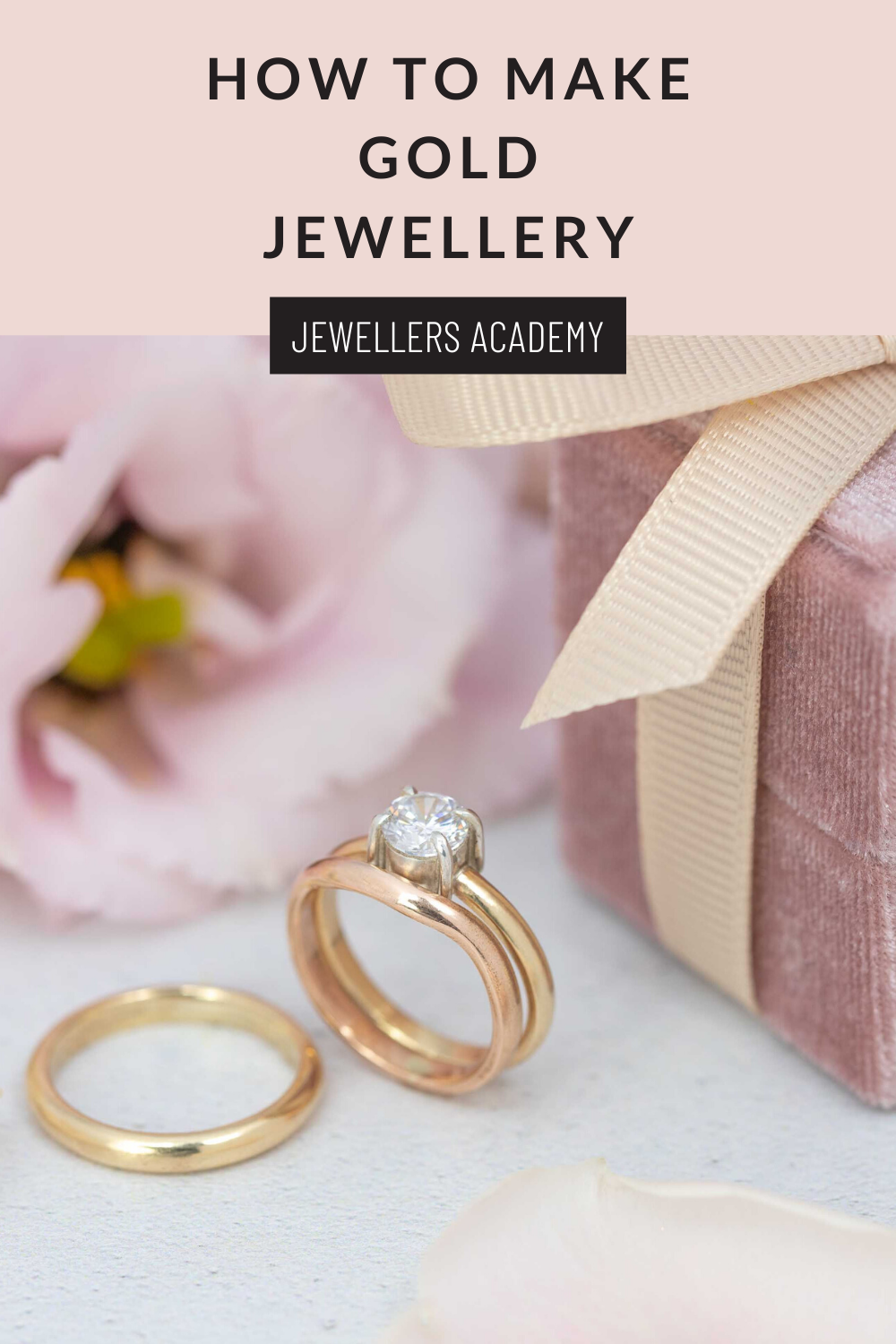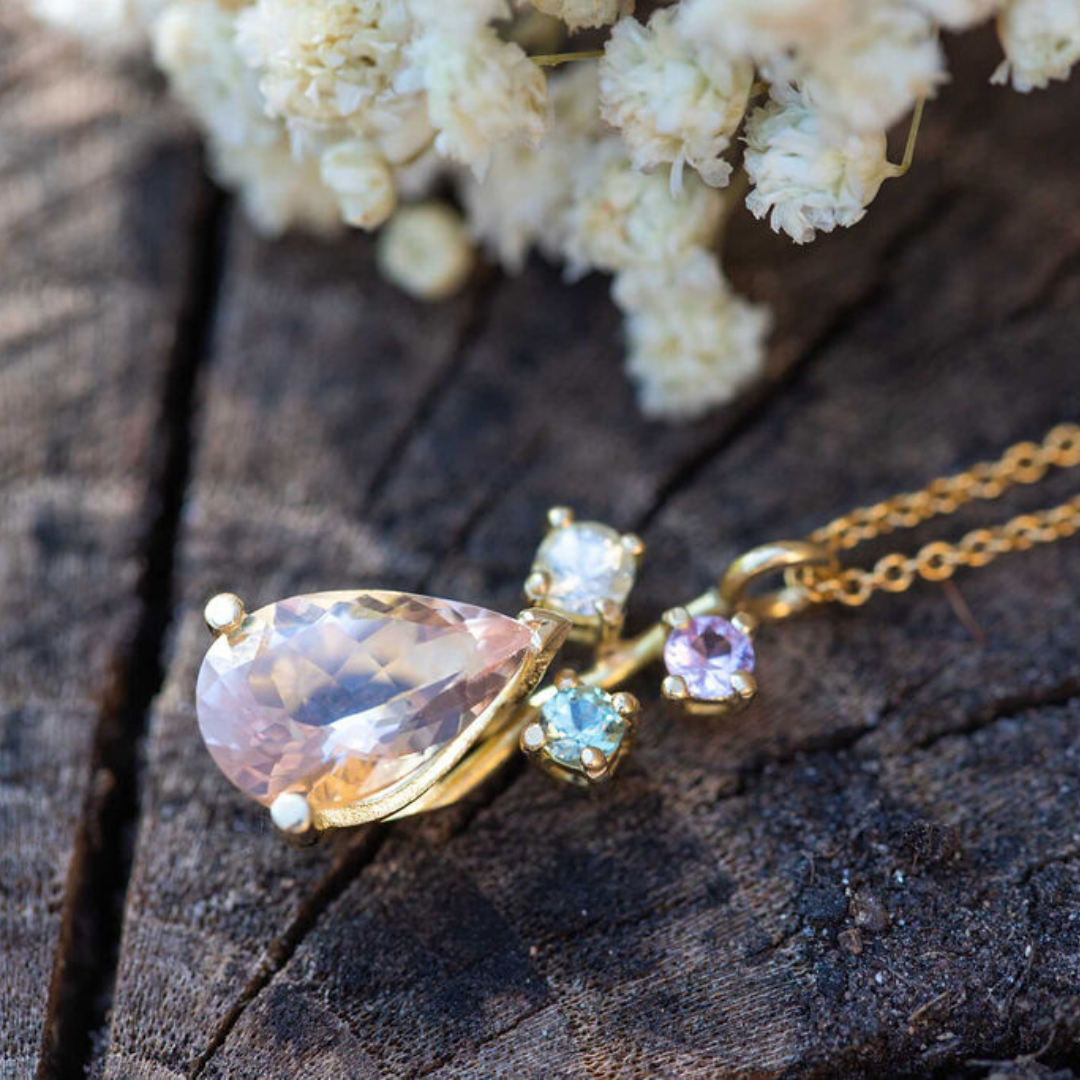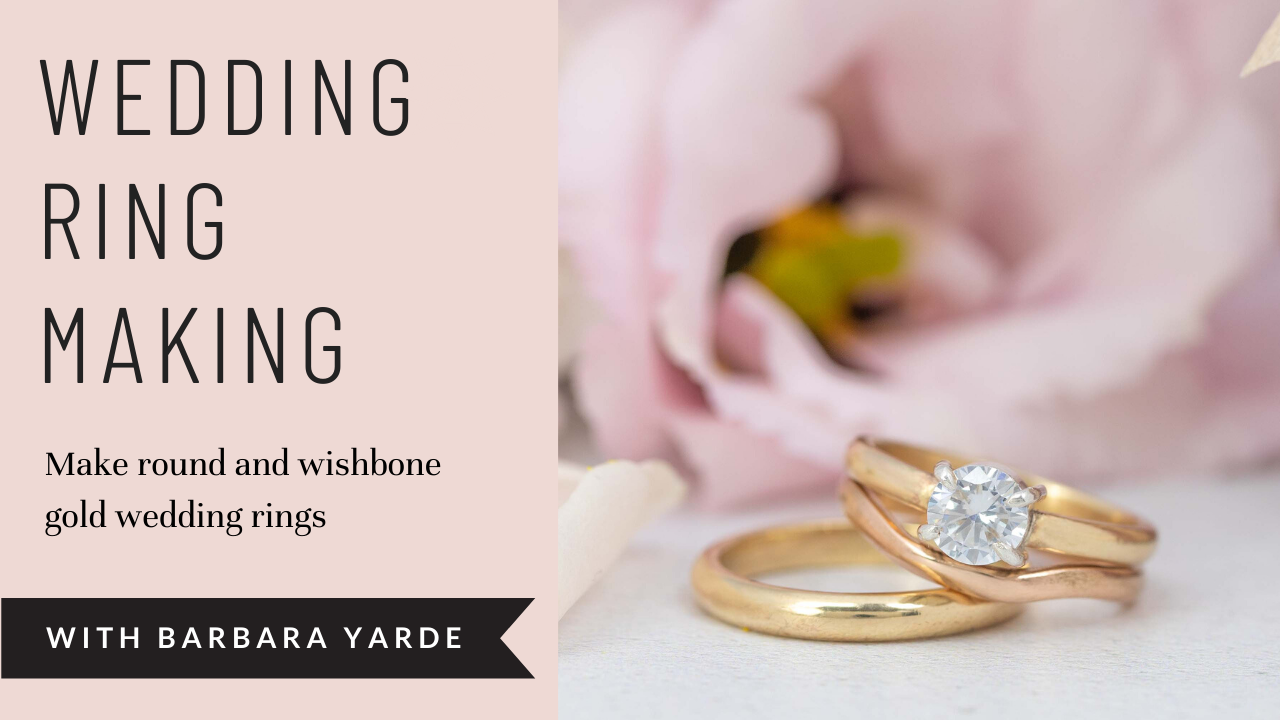WORKING WITH GOLD - HOW TO MAKE GOLD JEWELLERY
Working in gold is often a goal for jewellers. The secret is it’s not as hard has you’d think! Shhh!
What is the difference between working with gold and other metals?
Not as much as you might think! Usually when we start working with metals as a jeweller we practice on copper first, move on to silver and then start working with gold. This is to practice with more affordable metals and hone your skills before moving onto the precious metals.
You solder gold in the same way as you solder other metals and it can actually be easier to solder than silver!
You may need to invest in a larger torch e.g. the go system pro torch, a liquid flux such as Auflux, and a charcoal block to put the gold piece on (tip: get some binding wire and wind it around the sides of your charcoal block a few times. They can break apart in the heat and this helps them to last longer)
What type of gold should I use?
This really depends on the look your and your customer is going for, and personal preference. Simply choose the type of gold you would like to work with.
Gold typically comes in three main colours:
Yellow Gold
White Gold (please note that white gold is not actually white like silver. It is a creamy colour. White gold is usually rhodium plated to achieve that bright white finish. Rhodium plating typically needs to be redone every 5 years or so).
Red/Rose Gold
You can also occasionally find some slightly different gold colours available such as green gold, but these tend to be hard to find.
What does Carat/Karat mean?
The purity of gold is generally measured in carats/karats or fineness. The karat measurement is based on parts of twenty-four, with 24 karat being pure gold. Fineness is measured in parts per thousand, with 999.9 being pure gold. Neither of these measurements indicates what other metal or metals have been used in the alloy.
Gold in its pure form is incredibly soft and hard to work with. So typically the gold we use in jewellery is mixed with other metals, most commonly copper, silver, nickel, palladium or zinc, to create an alloy that enhances its strength and workability. The addition of these other metals and the amount of them used influences the end colour of the gold and of course the karat.
9 karat (9ct) gold is 37.5% gold
14 karat (14ct) gold is 58.3% gold
18 karat (18ct) gold in 75% gold
24 karat (24ct) gold is 99.9% gold or higher
Typically 9ct Gold and 18ct Gold are used in the UK with 14ct gold being more prevalent in the USA.
9ct gold is harder than 18ct gold so it is important to consider what you will be using the gold for. For example, you may prefer to use 18ct gold for bezels as it will be easier to push the metal over the stone as the alloy is softer.
Do I need to hallmark gold jewellery?
In the UK all gold pieces weighing over 1g need to be hallmarked by one of the Assay Offices if you are going to sell it.
You can find out more about the hallmarking process in the UK here >
In some countries hallmarking is not required for selling precious metals, in others it is voluntary and in others the standards for hallmarking are stricter. Do search around for guidelines in your country to ensure you are meeting your legal obligations.
What shape of gold should I buy?
You need to calculate the amount of gold that you need to make the piece you have in mind.
Below you can see the common gold ring profile wire types. Right now the half round/d shaped wire is a very popular choice.
What type of solder should I use?
Solder is a metal alloy designed to melt and join metal together. Most solders won’t work with gold, so you need to buy gold solder from your bullion dealer in either panel (thin sheet), or wire form.
You should purchase the correct solder for the metal e.g. if you are soldering 18 karat yellow gold purchase 18 karat yellow gold solder. Always use the correct karat of solder or the next solder up e.g. if you are soldering a 9 karat piece you could use 18 karat solder. Don’t use the solder that is a lower karat as this could affect the hallmark that is applied when the assay office test your piece.
Gold solders come in hard, medium, easy and extra easy as well as different karats and colors.
How do I solder gold?
There are actually only a few differences when it comes to soldering gold as opposed to copper or silver.
Preparing the gold
You prepare the gold in the same way as you do silver. Gold will need annealing to soften the metal prior to forming the piece into say a ring shape.
You also need to ensure you have a tight join before soldering in exactly the same way you do when fabricating a piece for soldering in silver.
Finally the metal needs to be clean and grease free, so it is important to file or saw the surfaces to be soldered to get clean metal after annealing.
Soldering the gold
Typically, gold is soldered on a charcoal block as it reflects more heat back onto the piece. Your piece should be well supported. Coat the join with flux (a liquid flux such as Auflux is more commonly used with gold). Then cut a small pallion(s) from your gold solder panel and apply to the join as required using a brush coated in liquid flux.
Now for some of the differences when soldering gold. It is important to note that gold doesn’t conduct heat the same way as silver does. So it is less important to bring the entire piece up to exactly the same temperature the way you have to do when soldering silver. Once the piece is hot and the flux has bubbled off, you can then focus on the area being soldered but focus the flame on the gold, not the solder. The key is that solder flows onto metal that is hotter than it is and flows towards the flame and to keep moving your flame back and forth slowly so as not to create any hotspots that could cause melting..
And it’s as easy as that!
But if you’d like to learn how to make gold jewellery at home we have some great courses for you!
Our online courses are taught by expert jewellers. You get lifetime access to them and can watch the professionally filmed courses as often as you’d like. You also get downloadable notes, a full equipment list and support in our Facebook group.
On the Wedding Ring Making online course goldsmith Barbara Yarde takes you through step by step how to measure the gold and make a ring. She shows how to make a traditional round gold ring and a wishbone shape, perfect for fitting around an engagement ring.
On our Make an Engagement Ring online course > Hayley Kruger takes you through how to make a ring with a 4 claw setting.
Note: both of these courses are intermediate level and are suitable for those with some experience of working with silver and soldering to make jewellery.
We can’t wait to see what you create!








